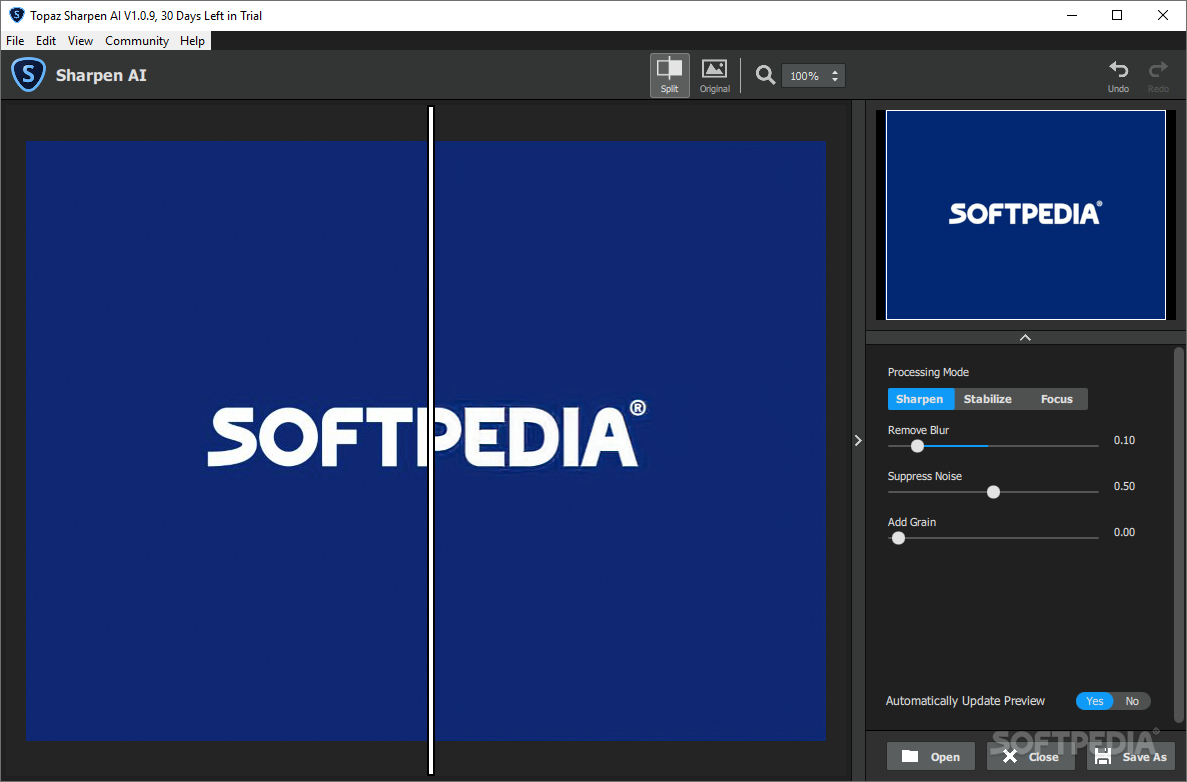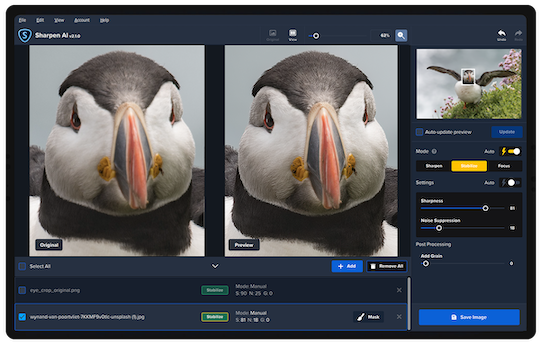
- TOPAZ SHARPEN AI INEFFECTIVE ON BLACK AND WHITE SOFTWARE
- TOPAZ SHARPEN AI INEFFECTIVE ON BLACK AND WHITE PC
TOPAZ SHARPEN AI INEFFECTIVE ON BLACK AND WHITE SOFTWARE
But if you would rather have all these features wrapped into a single application, you should check out Topaz Photo AI.įeel free to signup for my weekly newsletter and be notified of the lasted deals and discounts on Topaz Sharpen AI and other photography software and gear. Ideal if you’re looking for class-leading image sharpening, denoising, and upscaling. The Topaz Image Quality Bundle includes Topaz Sharpen AI, Topaz Denoise AI, and Gigapixel AI. On the most basic level, this means sharpening without all the usual bizarre artifacts such as fringing and haloing.

Unlike traditional sharpening tools that polish your photo’s edges, Topaz Sharpen AI uses artificial intelligence to correct and restore your image. And by standalone, I mean you can use Topaz Sharpen AI independently of another photo editor.Īlternatively, you can use Topaz Sharpen AI as a plugin for the following applications.
TOPAZ SHARPEN AI INEFFECTIVE ON BLACK AND WHITE PC
If you need to enlarge the image in order to edit it properly, it's ok to use it first.Topaz Sharpen AI is a standalone AI-powered image-sharpening application for your PC or Mac. If you want to enlarge an image you are happy with, use it last. It should also be noted that Gigapixel has a model for animation and computer graphics images as well.Īs for when to use Gigapixel, it is often used as a final workflow step but this can also depend on the original input image as well. Like our other apps, these are not necessarily as robust as our dedicated apps for noise reduction and sharpening but can help speed up your workflow when such additional image improvement is not necessary. There are also some tools for noise reduction and blur removal, as well as color bleed reduction and face refinement built into Gigapixel as well. For more generic sharpening to address "soft" images, you will probably want to do that toward the end like you might do in other workflows. Traditionally, you would do most of your sharpening toward the end of an edit, but if you're correcting missed focus or motion blur, you'll probably want to use Sharpen AI earlier in your editing process so that your subsequent edits don't interfere with the process. It is simply in Sharpen AI as a minor workflow tool when more robust noise reduction is not needed.Īs for when to use Sharpen AI, this depends on the photo itself. It also has some minor noise reduction capabilities similar to what you would find in Lightroom or Photoshop, but it should be noted that the noise reduction feature in Sharpen AI is not the same AI-based, detail-preserving noise reduction found in DeNoise AI.

Sharpen AI is intended to address several concerns including motion blur/camera shake, missed focus, and out-of-focus images. When such a conflict is suspected or likely, you should run DeNoise AI early in the editing process before you've edited the noise itself. Remember, DeNoise AI's noise reduction models are trained on unedited noise. Most of the time, you can probably run DeNoise AI wherever you want in your workflow and it will work just fine, but in some cases, if you edit the noise too much, or if the noise is not recognized by the AI model, the noise reduction might fail. Your noise is found within those same pixels, and as you edit you are affecting both the image you photographed and the noise.

Anytime you edit a photo, you alter the pixels in that photo. This is just a basic sharpening tool for when more complex sharpening is not needed, similar to what you would find in Lightroom or Photoshop.Īs for when to use DeNoise AI, consider how noise is affected by your editing. While it has some sharpening capabilities, these are not the same robust AI sharpening capabilities in Sharpen AI to address concerns such as motion blur and missed focus. In particular, it allows you to reduce noise while retaining fine detail that would be lost in traditional noise reduction tools.

When To Use DeNoise AIĭeNoise AI is intended to be a dedicated noise reduction software. One of the most common questions we receive here at Topaz Labs is when should you use each of our plugins? The truth is there isn't one "perfect way" to use our programs but a thorough understanding of each program's purpose will help you make an educated decision for your own unique workflow. Straight from the source, at Topaz Lab's support site (emphasis mine, and some text omitted): When To Use DeNoise AI, Sharpen AI, and Gigapixel AI Has Topaz ever stated if there are different AI backing these programs? Do they have recommendations on using one or all three for one image?


 0 kommentar(er)
0 kommentar(er)
